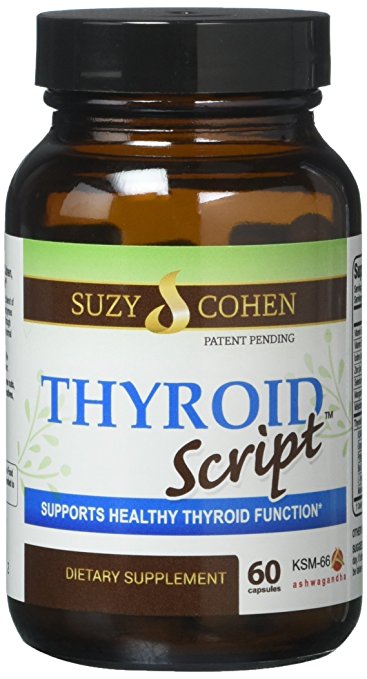Linda J Dobberstein, DC, DACBN, DCBCN, Wellness Resources
Thyroid Nation
I think this was the downfall of my adrenals and my Hashimoto’s trigger! (watch REAL video via Facebook below) ~Danna
Whiplash, Thyroid and Adrenals, by Linda J. Dobberstein, DC
In the last ten to fifteen years, substantial progress has been made in understanding whiplash injuries. Many individuals who suffered from whiplash injuries were thought to be malingering or seeking insurance or disability benefits without cause from minor motor vehicle accidents. These individuals, most commonly women, often suffer upper neck and back pain, trouble sleeping, fatigue, and chronic muscle soreness. They may also experience forgetfulness, brain fog, mental fatigue, loss of motivation, irritability and other brain-behavior changes.
New research shows that the mechanism of injury to the neck with whiplash trauma is not due to “hyper-flexion or hyperextension movement” as previously thought. Rather, it is a shearing activity that occurs in the cervical spine in less than a tenth of a second at the point of impact. This shearing effect is an abnormal motion and causes stretching and tearing in the ligaments, cartilage and other soft tissues of the neck. It creates a non-physiologic cervical S-curvature which is responsible for the neck injury. The area that is primarily affected is the lower neck region, but it may affect the entire cervical spine or neck and have consequences in other regions. Women are at a higher risk for injury simply because they generally have less muscle mass and smaller tendons and ligaments. Thus, they are not able to withstand as much force before the cervical spine reaches it’s end-point causing the joints to go beyond normal physiologic range.
Whiplash and Thyroid Function
While these findings have great implications for overall health for many involved in minor motor vehicle accidents, the concern for health also extends to thyroid function. The thyroid gland sits in front of the trachea, below the Adam’s apple in the lower neck. This is the same area that is commonly traumatized with whiplash. While the link between whiplash injuries and hypothyroidism is not fully understood, it has been demonstrated that there is a significant connection. Many individuals with new or undiagnosed hypothyroidism have a history of whiplash injury. The symptoms may be coming from the injured spine and soft tissue disruption, but it is also quite likely that the thyroid has been pushed into a state of hypothyroidism from the injury inflammation.
HPA Axis and Adrenal Function
It is also known that individuals with chronic whiplash injuries have negative effects occurring with the HPA (hypothalamic – pituitary – adrenal)axis and the adrenal stress hormone, cortisol. The HPA axis is the loop of communications that starts in the unconscious brain, the hypothalamus, that then tells our pituitary and adrenal glands how to manage cortisol. This feedback loop also communicates with the thyroid. Persons dealing with chronic whiplash concerns often have abnormal function in this system. Cortisol levels were blunted or low in the morning and then had an altered rhythm and levels later in the day. This may feel like you have trouble getting out of bed in the morning, fatigue, poor stress tolerance, chronic pain, and trouble getting to sleep and/or staying asleep. It may also potentially contribute to the phenomenon of “wind-up” or kindling with elevated substance P and other neuroinflammatory chemicals.
This reaction may be due to the sheer amount of inflammation that occurred with the motor vehicle collision or it may be the amount of stress that happened simply exceeded the brain and body’s capacity to cope, i.e. a minor trauma on top of an already overwhelmed body with daily life. It may also be possible that this reflects a traumatic brain injury response such as a concussion; the brain cannot send appropriate signals because of its own areas of inflammation from microglial cell activation.
Improving Thyroid, Adrenal, and HPA Axis Function
The goal with whiplash and stressed thyroid, adrenal, and HPA axis function is to reduce acute inflammation and protect it from chronic inflammation. Selenium, quercetin, zinc, and glutathione are critical for thyroid health and reducing inflammation. Nutrients that support the production and recycling of glutathione include R-alpha lipoic acid, B vitamins, magnesium, NAC, whey protein, vitamin D, glycine, silymarin, vitamin A, tocotrienols, and others. Read more about improving thyroid health.
When dealing with adrenal issues, pantethine, vitamin C, and magnesium are required nutrients. Additional support may also include a full B complex formula, zinc, coenzyme Q10, and others. Read more about improving adrenal health.
Nutritional support to reduce neurological inflammation and the imbalance of the HPA axis may include curcumin, resveratrol, tocotrienols, grape seed extract, coenzyme Q10, vitamin D, fisetin, quercetin, DHA and several others. The nutrients phosphatidylserine, calcium AEP, ashwagandha, Panax ginseng, and methylcobalamin help support HPA function and help rebalance the altered circadian rhythm or imbalanced cortisol rhythms.
Knowing that there is a link between the effects of a whiplash trauma and thyroid, adrenals, and the brain communication loop – HPA axis, can help you and your health care practitioners take charge of your health. Individuals who were considered malingerers or hypochondriacs who may have had limited healing after a motor vehicle accident, are now validated and have tools to start resolving these layers of distress.
**This article originally featured on WellnessResources.com**
Questions or anything to add about whiplash? We want your thoughts in the comments section–Please!



